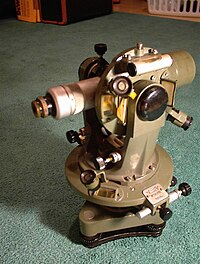
Photo from wikipedia
Long-term monitoring programs to evaluate climate-driven changes to tidewater glaciers, an important habitat for harbor seals (Phoca vitulina) in Alaska, are primarily carried out by costly, weather-dependent aerial surveys from… Click to show full abstract
Long-term monitoring programs to evaluate climate-driven changes to tidewater glaciers, an important habitat for harbor seals (Phoca vitulina) in Alaska, are primarily carried out by costly, weather-dependent aerial surveys from fixed-winged aircraft. Unmanned aerial systems (UAS) can be an alternative cost-effective solution for gathering image data to quantify, monitor, and manage these habitats. However, there is a paucity of information related to the accuracy of using imagery collected by UAS for purposes of measuring floating icebergs. We evaluated the accuracy of using a UAS with a built-in 20 megapixel (MP) camera as well as a consumer-grade digital 16 MP camera to capture images of floating and stationary icebergs for the purpose of collecting vertical height measurements. Images (n=869) were captured of simulated icebergs (Cuboidal foam boxes) "Cb" (n=5) and real icebergs (n=5) that were either grounded or floating. The mean error ratios obtained were less than 10% and derived by comparing the mean calculated measurements of heights of Cb obtained from images captured by UAS with the physically measured heights of these Cb. The mean error ratio for height measurements of grounded icebergs (n=4) and one floating iceberg was also less than 10%. Within an object-image distance range of 6-25 m, the cameras captured images that were suitable to accurately calculate the heights of floating and grounded objects, and drift or uncontrolled movement of the UAS caused by wind or temporary loss of GPS did not appear to have any significant effects on measurement error. Our study provides substantial evidence of the high accuracy associated with using images captured by UAS for measuring dimensions of structures positioned on water and land surfaces. Ultimately, accurate surveys of glacial ice used by harbor seals will improve our understanding of the role of decreasing habitat in explaining population variability between different tidewater glaciers.
Journal Title: Ecosphere
Year Published: 2022
Link to full text (if available)
Share on Social Media: Sign Up to like & get
recommendations!